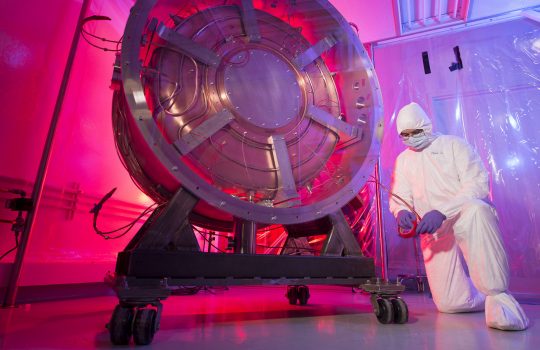MICE cold: Collaboration demonstrates muon ionization cooling
From Scientific American, Feb. 5, 2020: The best-laid plans of MICE and muons did not go awry: Physicists at the International Muon Ionization Cooling Experiment, or MICE, collaboration have achieved their years-long goal of quickly sapping energy from muons. The results are the first demonstration of ionization cooling, a technique which could allow researchers to control muons for future collider applications — an epochal achievement, according to Fermilab physicist Vladimir Shiltsev.



